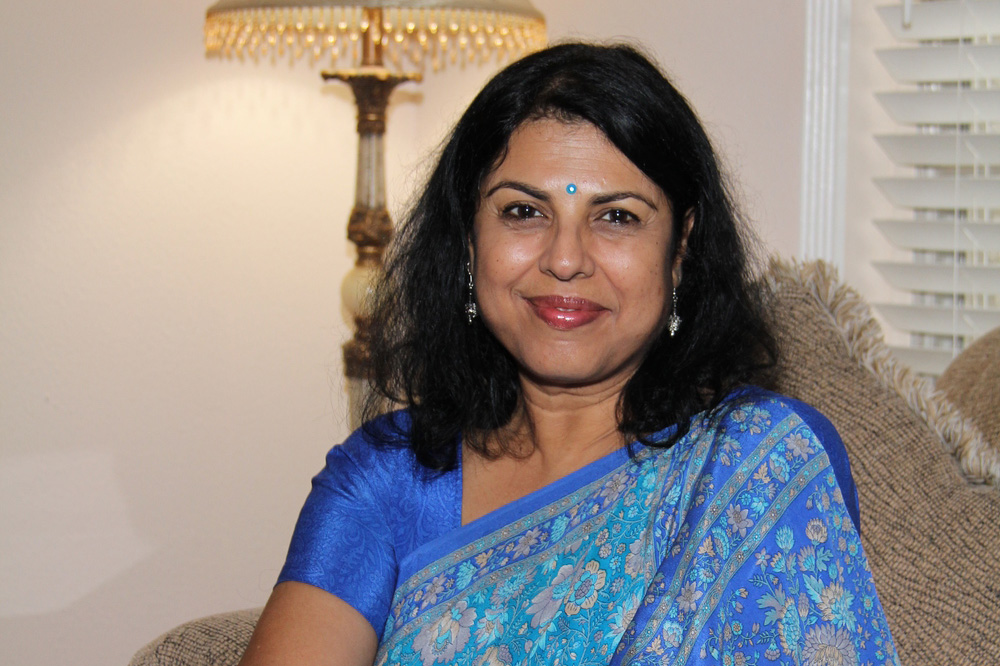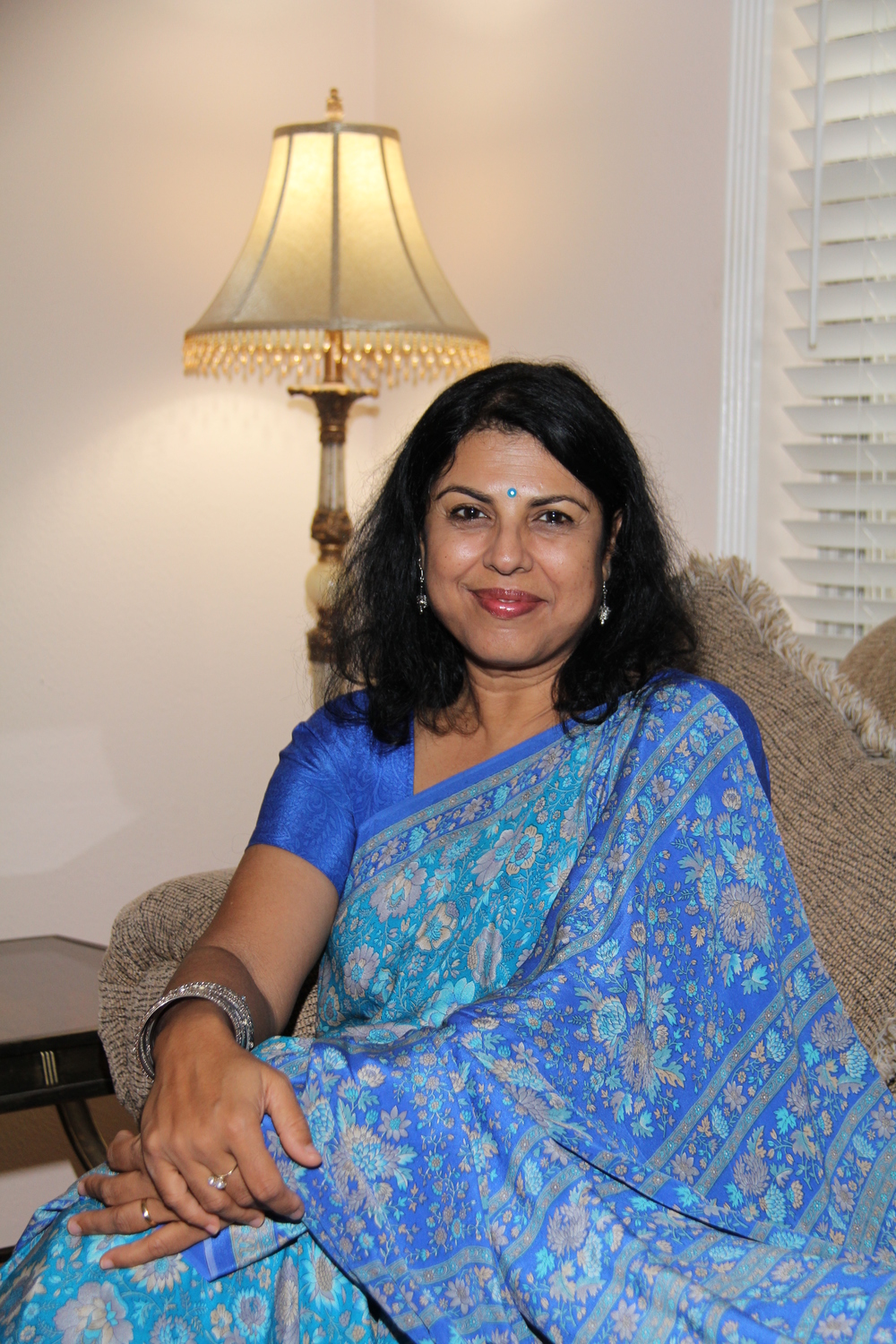Published July 13th, 2020
Profile
by Ram Kulesh Thakur

Being in a very close contact with the Western countries for more than two centuries, it is natural for one to find ‘East meets West’ issues in Indian English Literature. Themes such as adoption into a new culture and formation of identity separated from their familiar background which includes religion, food, and clothes etc echo in the writing of immigrant authors.
The works of contemporary women short story writers such as Jhumpa Lahiri, Chitra Banerjee Divakaruni, Bharati Mukherjee and Kiran Desai presents the gamut of Indian immigrant experiences. Their work is filled with cultural issues which arise out of their own experiences and observations abroad. They all express the feelings of double segregation (both from their homeland and the land where they currently reside on), alienation and nostalgia, which an immigrant reader too can identify with.
In their writing, women and women’s predicament throughout, both in India and abroad remain prominent. They articulate in their writing the deepest fear and trauma faced by women, and show them emerge, in many cases, stronger and self-reliant women. This theme resonates the common discrimination meted out to women in other cultures also. No matter where women are, either in their own culture or without, subjugation and gender discrimination haunt them.

Like the heroines of her stories, Chitra Banerjee Divakaruni has come a long way, both figuratively and literally. A theme that runs through her acclaimed collection of stories about Indian immigrant women dealing with cultural conflict is that there is no such thing as perfect life. Although literary success came to Divakaruni early and quick in her life, it took years of study and struggle. After immigrating to America at the age of 19, Divakaruni, like her women protagonists, too had to struggle against racism, against cultural differences and against insider-outsider syndrome.
It happened in 1976, when she was only 19, walking down a Chicago street with some relatives she was appalled when a few white teenagers yelled “nigger” and hurled slush at her. The incident, deeply shaming, was never discussed, but it stayed and played in her mind and acted as the spur to kick-start her writing. And then one evening, years later, her five-year old son Abhay returned from school and tried to wash the “dirt” colour off his skin. These two incidents had a huge impact on her mind and her writing.
Her focus is on the lives of immigrant women struggling with cultural shackles, and on the theme of immigrant conflict, that is, acquired values versus the adopted ones. The duality of immigration, that is, the pain of leaving the homeland as well as the excitement of being in a new place, gives voice to the inner conflict that her characters face.
In both of her works Arranged Marriage and The Unknown Errors of Our Lives, an entirely opposite polarity of experiences of the lead female characters have been depicted. Arranged Marriage focuses on the first generation of immigrant women caught between two worlds. The characters, both liberated and trapped by cultural changes, struggle to carve out an identity of their own. For the women, who have immigrated to an entirely different country, the possibility of change is terrifying as well as filled with hopes and promises to which they look forward to; whereas in the second collection The Unknown Errors of Lives, however, the story of diaspora continues but with a different angle.
In most of the stories from her first collection, her women protagonists want to go to America, looking for new identity filled with lots of hopes for a liberated world. In the second collection, however, her women protagonists, on finding the situation in America worse than what they had expected, want to come back to their roots. The immigrant, as depicted in the story ‘Mrs. Dutta Writes a Letter’, is not an ambitious person who wanted to come to America seeking better prospects, but because everyone they love – family children and grandchildren – wanted them to come. But the children born to first generation immigrant parents want to come back to India to look for their descent trying to connect with their homeland.
The story ‘Silver Pavements, Golden Roofs’ celebrates the experience of a young woman Jayanti, who comes to the United States to pursue her studies, with a fairy-tale notion of America which shatters when she faces the reality of the culturally displaced South Asian Immigrants’ lives. She realises by the end that the migrants may adapt and mingle with the host country, but they are not considered as part of that country. They are and will always be “outsiders”. Her fanciful illusion of America and her fascination for the new clothes and Western ways fade away with just one incident which jolts her out of the trance and makes her understand the duality of the existence of the immigrants.
The horrifying incident happens when out on an evening walk with her aunt, Jayanti confronts a few teenage American boys who yell out “Nigger” (p 50) and throw slush at them. This incident cured Jayanti of her dreamland idea of America. It also has an autobiographical element to it. The same event happened to Divakaruni when she first came to Chicago. It had a shocking impact on her, which finds expression in this story.

The displacement of the migrants can be viewed at two levels, first from the point of view of Jayanti’s Uncle Bikram and Aunt Pratima, and second from that of Jayanti. Divakaruni focuses on the inner turmoil of the characters who find themselves entrapped between two cultures. This idea is depicted in the characters of the aunt and the uncle who can neither bring themselves to adapt to the new culture, nor forget their roots. The frustration and helplessness of the immigrants is very well expressed in the character of Uncle Bikram, who has faced only humiliation and discrimination. His shop was ransacked by some bullies, resulting in facing huge financial loss and the trauma of always being a “dark skinned foreigners, kala admi” (p 43); as also the pain of never being accepted as one in the American society haunts him always, as he vehemently says to Jayanti: “The Americans hate us, you’ll see it for yourself soon enough” (p 43). Aunt Pratima too faces the exact opposite of what she had imagined in the land of opportunities for her husband and freedom for herself; instead what she gets is confusion and humiliation at every step, either because of her dark skin or her strong Indian accent.
The other view is that of Jayanti who is excited to be in America. She reaches there with a pre-conceived notion of finding her Aunt and Uncle Americanised and heaping in loads of dollars every month. But she is surprised and disappointed to see the almost “low-class” (p 39) run-down apartment of her uncle and aunt. On her uncle’s violent outburst, she wonders what could possibly have happened to hate this country so much, she is also annoyed with him for trying to ruin her excitement and fascination for this entirely new country. But after that incident she saw and understood how the natives think of them as outsiders and treat them with disdain. It fills her with a sense of total and complete alienation from the country to which she came with such high hopes and ambitions, and also the need to return to where her roots lie.
Divakaruni in this story presents the identity crisis and the sense of displacement that migrants face in an alien country. Jayanti’s aunt and uncle, and later she too accepts this. They all belong to the first generation of immigrants who struggle to survive in a surrounding which they can neither accept nor are allowed to accept as their own. They constantly feel the pull of home and suffer cultural introspection between their two selves – the native and the adopted. Divakaruni very subtly highlights the typical American stereotypical mentality of considering every dark-skinned foreigner as “kala admi” (p 43). Even children, whom Jayanti is surprised to see, call out “Nigger Nigger” (p 50) “as easily as one might say thank you or please. Or no problem.” (p 51)
She very aptly presents the trauma of exile in the immigrants’ mind and life. And being an immigrant herself, she deeply feels the importance of familial bonds which tie people to their homeland. It is shown when aunt and uncle find comfort and solace in one another which gives them strength to accept the inevitable as Jayanti herself accepts at the end, that shiny and glittery though the life in America may seem, it is not so. The “Silver Pavements” and the “Golden Roofs” are all illusion and nothing else. And that life there for a non-native is full of struggle, both with their self within and with the society without.
In another story ‘Clothes’, based on a woman’s perspective of marriage, the protagonist attempts to strike a balance between her hereditary cultural values and the acquired modern liberal thoughts. The character Sumita, like Jayanti, comes to America with a preconceived idea of liberty and unchained life, unlike what she had been used to back in India. But again, this notion is shattered when after her husband’s death she is forced to face the future on her own. She is left with options: either to go back to India with her in-laws and live the life of a widow – “widows in their white saris.........bowing their veiled heads, serving tea to in-laws. Doves with cut-off wings” (p 33) or stay in America to search for her identity which would surely get lost if she goes back.
She thinks, “I know I cannot go back. I don’t yet know how I'll manage, here in this new dangerous land. I only know I must” (p 33). She finally forsakes the traditional norms because the new culture promises to bring freedom and identity to her. Her only dilemma is that no matter what she chooses, the situation remains the same for her. That is, if she decides to keep the cultural values intact, she loses her identity; and if she discards those values, she runs the risk of leaving her family behind.
Divakaruni’s other collection of stories The Unknown Errors of Our Lives focuses on women striving to create new identities and at the same time incorporating the old one. Young or old, one finds these women escaping and searching for their traditional culture. The female protagonists of this collection of stories seek the lost roots which they have left far behind. And this quest for these roots pulls them back towards home.
The first story of this collection ‘Mrs. Dutta Writes a Letter’ is the story of cultural and generational differences that an ageing widow faces. When her only son insists her to move in with his family to the United States, Mrs. Dutta sells everything she owns, even her house, to be with her son. There she cannot help herself being useful around the house, cooking and laundering; but at the same time, she senses some kind of tension growing between her son and his wife because of her presence: she sees that her grandchildren are impatient and embarrassed by her. The daughter-in-law, Shyamoli, embodies the typical Asian immigrant, trying to be what she is not, that is, American. She, instead of standing up to her American neighbours who look down upon her, has been reduced to denying her own identity in trying to create a new one: “All these years I’ve been careful not to give these Americans a chance to say something like this, and now...” (p 29). But for Mrs. Dutta, there is no hope of assimilating into the western ways of life.

Her son, Sagar, daughter-in-law, Shyamoli, and grandchildren, Mrinalini and Pradeep, have adapted themselves by changing their external appearance and behaviour for an easy acceptance in the new society, which never comes to them. For Mrs. Dutta, it proves to be a traumatic experience. Raised in a household where she was supposed to be up before everyone, the habit got ingrained within her. But now it is this habit and many others that start a whole array of problems. As her son says to her: “Mother, please don’t get up so early in the morning. All that noise in the bathroom, it wakes us up, and Molli has such a long day at work” (p 4). When she receives a letter from her best friend in India, asking “Are you happy in America?” (p 5), it makes her think about her life. She writes and rewrites her response; unsure of what could be a correct answer to this question, and unsure if she can reveal the truth of her loneliness and displacement, even to herself. And home, as she finally realises, is not necessarily found in a country, or in the blood ties of family: “I am no longer sure what happiness is. All I know is that it isn’t what I thought it to be. It isn’t about being needed. It isn’t about being with family either. It has something to do with love...” (p 33). And the story ends with Mrs. Dutta trying to figure out happiness, back at home in the rented portion of her friend’s house in Calcutta.
Another story ‘The Names of Stars in Bengali’ follows a woman’s journey back to her homeland and examines what she gains, loses, how she becomes different and how she renegotiates her relationships. The story is a detailed analysis of an emigrant situation. The daughter, significantly called the mother, who has married a half-Hindu, comes home for a vacation with her two sons. Divakaruni captures in this story “those simple, yet striking reverberations that the visit of the daughter with her US born sons creates in the traditional Bengali household.” (Web, 2011) The whole house echoes with the sound of children mispronouncing Bengali words, grandma narrating bedtime stories and women pouring in to make enquiries.
Returning to the homeland, after a long duration, intensifies the protagonist’s awareness of how distant and different she has become from her native people and her tradition. But the remembrance of old times brings nostalgia on her mind. This nostalgia reaches its full circle during the mother’s night ride with her cousin in his scooter, when she tries to recollect the names of stars in Bengali. She tries to recollect her own lost self which she wants to renew: “How does one remake oneself, she wants to know. It is a skill she is in need of. But she cannot think of an appropriate way of asking this in Bengali,” (p 266) and in turn she wants to recapture her own youth in India by bringing her young sons to the village where she was raised.
Apparently torn between memories of the tradition and families that they left behind in India and the new modern life they are creating in America, Divakaruni’s strong central characters seem suspended from an emotional precipice as they confront life-changing decisions. Outwardly the journey appears to be from one country to the other, but there is an inward exploration of the self in this process. At first, there is the thesis of their need for separate identity and self-discovery that lure these characters to an entirely different country (the theme that is dealt with in the stories from Arranged Marriage).

But this thesis instead of leading to a solution or to the resolution of the conflicts turns to antithesis in their observation and discovery of the contrasting opinion of what they had imagined their life to be in America (the theme which is somewhat dealt with in the Arranged Marriage and mostly in The Unknown Errors of Our Lives). It finally results in the synthesis of the errors which these characters have unknowingly made in their lives, and which reaches its full circle when they return to their final destination, that is their homeland, as Divakaruni's characters do in the second collection The Unknown Errors of Our Lives. They seek for their lost identity in their homeland which they had earlier strived to create in a new country but were thwarted in their attempt to mingle. This lack of belonging in a new country leads to the search for their actual identity which they try to recover.
Her characters, whether in America or in their traditional homes in Bengal, try to bridge the gap but find it easier in the periphery of their home, both simultaneously and psychologically. Divakaruni’s stories clearly bear out the fact that the lead characters have problems in adjusting or adopting to the new cultural norms of their host society. They consider returning to their former country because they resist the values of culture of the new society and fail to negotiate their own sense of security or difference or identity.
Chitra Banerjee Divakaruni in her stories not only brings her characters but also her culture and tradition and values from homeland to a new land. It is this culture that finds expression in her use of language and representation of images that are specifically Indian. It suggests that like her protagonists, Divakaruni too, cannot let go of her cultural roots, no matter where she goes.
Shailaja, P. “Indian Diaspora: An Overview”. Triveni. Vol. 75. Oct-Dec 2006. No. 4.
Kamath. A.P. Women Writers of Indian Diaspora Create A Big Impact. Rediff. http://www.rediff.com/news/1999/aug/23us 1.htm.
Satchidanandan, K. Indian Literature: Paradigms & Praxis. New Delhi: Pencraft International. 2008, pp. 148-49.
Girish, Uma. Straddling Two Cultures. Calitreview. http://www.calitreview.com/58.
Huang, Guiyou. Asian American Short Story Writers: An A-to-Z Guide. Westport: Greenwood Publishing Group. 2003.
Nationality: Indian
First Language(s): Mathili
Second Language(s):
English,
Hindi,
Bangla
Supported by:


